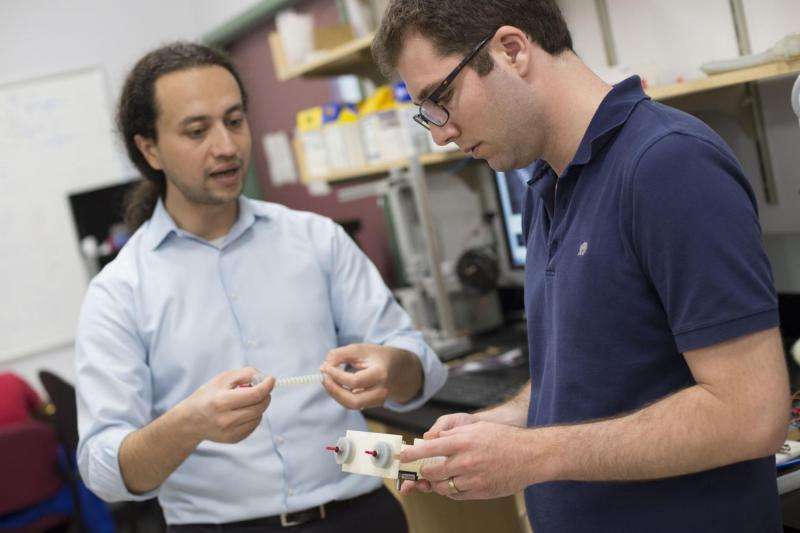Needed: Soft robots to solve hard problems

Seeking to explore potential applications for soft, deformable robots, a largely unexplored area of robotics engineering, a Worcester Polytechnic Institute (WPI) professor has secured nearly $600,000 in federal funding for two separate projects that could point toward practical uses in medicine, manufacturing, and disaster response.
Dmitry Berenson, assistant professor of computer science, has been awarded a three-year, $322,319 National Robotics Initiative (NRI) grant from the National Science Foundation titled "Collaborative research: Human-supervised manipulation of deformable objects," and a two-year, $247,355 Early Concept Grant for Exploratory Research (EAGER) from the NSF to study "fundamental algorithms for design, control, and motion planning of soft manipulators."
While there have been decades of research on robotics that use rigid materials, Berenson said little attention has been devoted to so-called "deformable objects."
"This is an under-explored area of robotics, and through these grants we're aiming to learn more about how soft robots and materials could be used in a variety of applications," said Berenson, whose research focuses on robotic manipulation, motion planning, and collaborative robotics. "We're looking forward to studying this area extensively over the next several years."
The focus of the NRI grant, which WPI received in collaboration with Case Western Reserve University in Cleveland, is to explore potential uses of soft robotics in medicine. Through the collaboration, the universities are seeking to evolve science that would enable them to build surgical robots known as "intelligent surgical assistants."
"We want to make the robots smarter to help surgeons perform more effective manipulation in surgery," said M. Cenk Çavu?o?lu, a professor in the Department of Electrical Engineering and Computer Science at Case Western Reserve University, who is a co-investigator on the grant.
The EAGER grant focuses on robots that could change shape and insert themselves into confined areas. Cagdas Onal, assistant professor of mechanical engineering at WPI and a co-principal investigator, cited an example of using a soft robot in a search-and-rescue mission. For example, a soft robot built like an elephant trunk could be strong but flexible, while one modeled on an octopus tentacle could maneuver around rubble or other debris to find its source.
"These objects could be deformable and small enough, yet strong enough, to reach into cluttered environments and potentially move rubble out of the way and find a person," said Onal.
Additionally, Onal noted that a soft robot could potentially work alongside humans in factories or small-scale operations. For instance, he said, a robot built with a soft arm could do less damage to equipment or harm to people than one built with rigid materials. "A soft arm is a potential solution to many challenges we face in human-centric manipulation tasks," said Onal.
Onal is optimistic about the future of soft robotics research. "I'm very excited about where all of this research may lead," he said. "This is a very exciting time to be involved in groundbreaking research that has such widespread application."
Provided by Worcester Polytechnic Institute




















